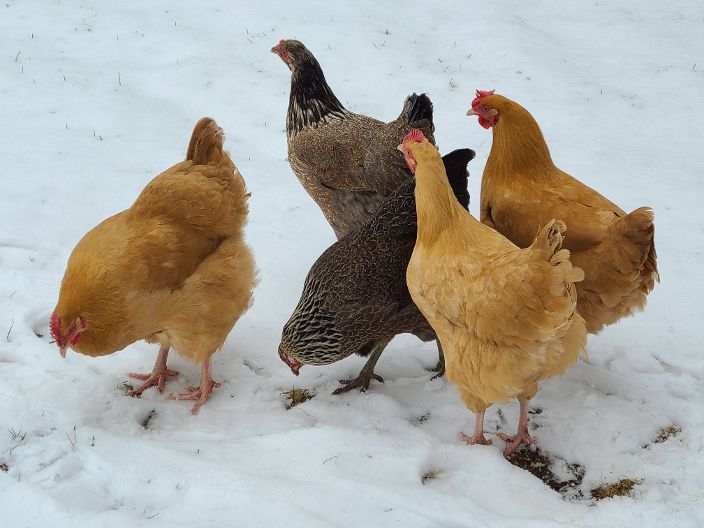Just the other day, someone stopped by while I was out with my chickens. He asked how our chickens are managing in the winter. Sadly, he told me that they lost some of their chickens in the winter. I think I’m relieved not to hear the whole story.
Whether you have chickens, plan to get them, or are just curious how we keep our chickens warm in winter, I want to share these tips with you.
This post contains affiliate links from which I can earn a commision, at no cost to you. Visit my full disclosure page here.
Breeds
Before you even order your chicks, you can select breeds that are right for your winter! What makes a breed more cold hardy?
Size
With the exception of Melissa, my little Crested Cream Legbar, all of my girls are built for cold temperatures. They are large, muscular breeds. More muscle means more warmth.
Feathers
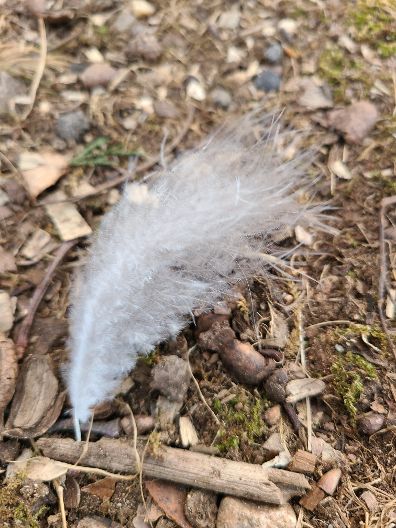
Chickens have thousands of feathers. Bigger birds have more feathers. Many are the downy feathers seen above. When it’s cold, chickens will puff up their feathers creating layers of air between the feathers. This provides a real coat of insulation to keep them at their average 106 degree internal temperature.
Read more about my chickens in my Chicken Photo Gallery and A Dream Come True: Five Things to Do Before You Get Chickens.
Combs and Wattles
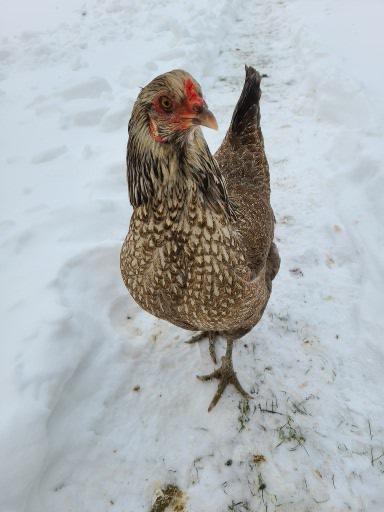
Peppermint has a Pea Comb 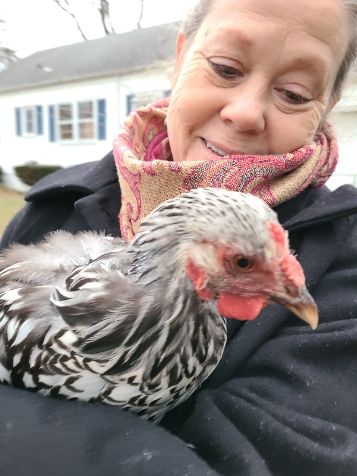
Stevia has a Rose Comb 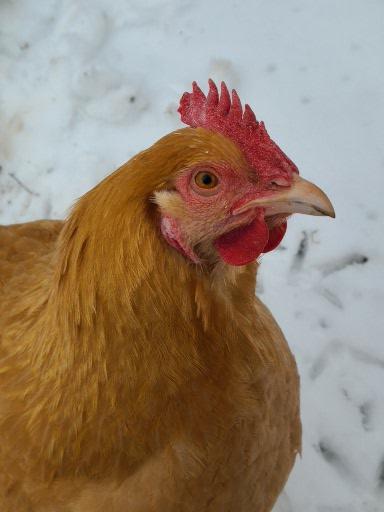
Comfrey has a Single Comb 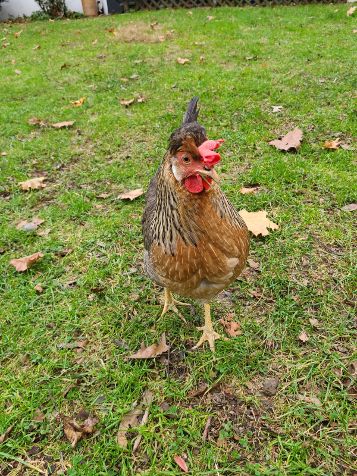
Melissa’s frilly Single Comb needs frostbite protection
The larger the combs and wattles on a bird, the more likely they are to get frost bite. Pea and Rose Combs are small making them safer from frostbite. Single combs vary widely in size and can be at great risk for frostbite.

A tiny dab of petroleum jelly protects the combs and wattles. A little goes a long way and it can end up everywhere! The chickens hate when I put it on. Hopefully this second application will be the last for this winter.
Here are the top breeds for keeping warm in winter!
- Ameraucaunas
- Austraulorps
- Brahmas
- Buckeyes
- Chanteclers
- Cochins
- Dominiques
- Easter Eggers
- Jersey Giants
- Faverolles
- New Hampshire Reds
- Orpingtons
- Plymouth Rocks
- Rhode Island Reds
- Speckled Sussex
- Welsummers
- Wyandottes
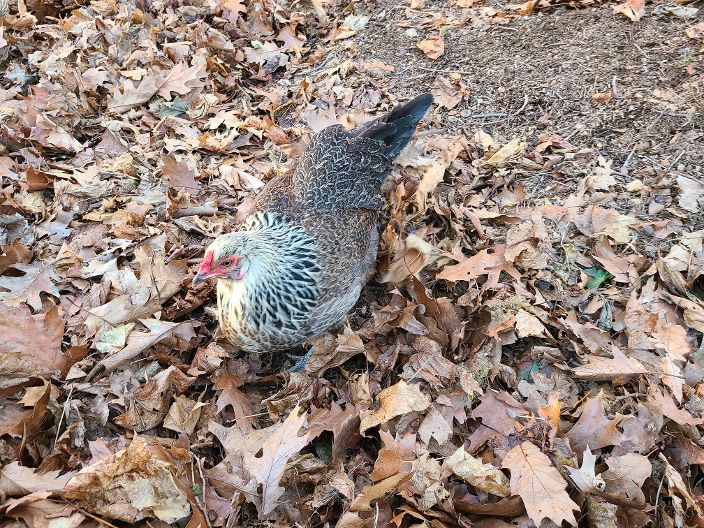
Ginger is an Ameraucauna 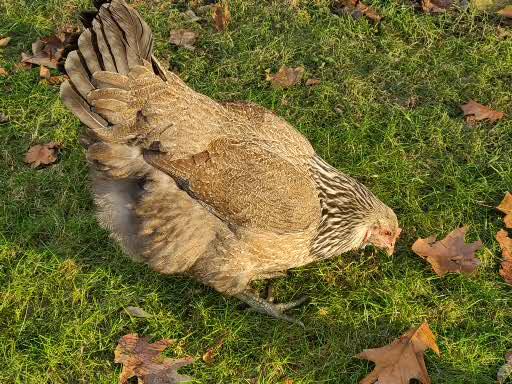
Peppermint is an Easter Egger 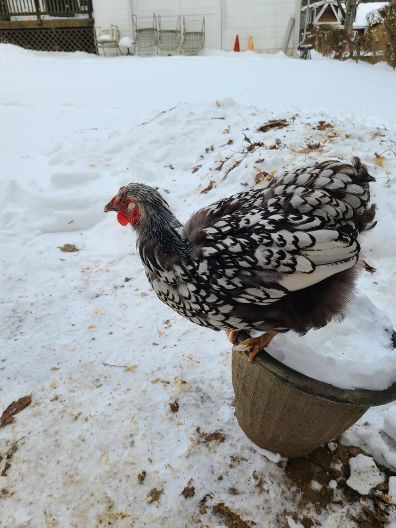
Stevia is a Wyandotte (please excuse her feathers, they’ve grown back!) 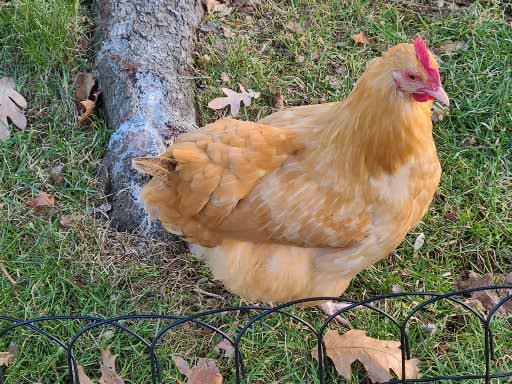
Clover is a Buff Orpington
There are many articles and websites where you can find detailed information about these breeds. A great place to start is at Fresh Eggs Daily. I met Lisa Steele at some poultry seminars I attended. I refer to her articles and website often!
My go-to handbook on all chicken questions is Storey’s Guide to Raising Chickens.
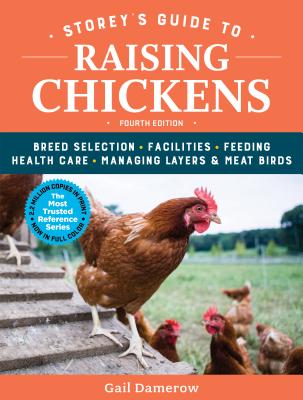
Roosts
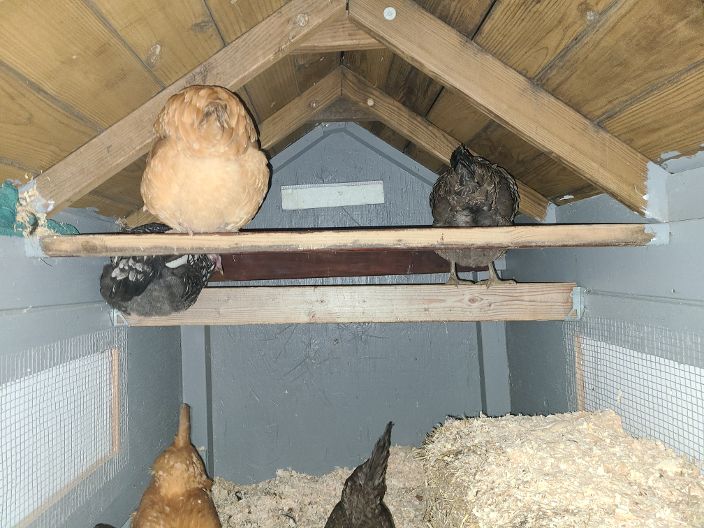
When the girls all gather on the roost at night, they are packed in closely. Melissa is usually snuggled in close between two of the Buffs.
Comfrey, my biggest girl, seems to be the thermostat of our flock. When the temperatures hover above freezing, she’s usually on the upper roost. But when they dip she adds her warmth to the group.
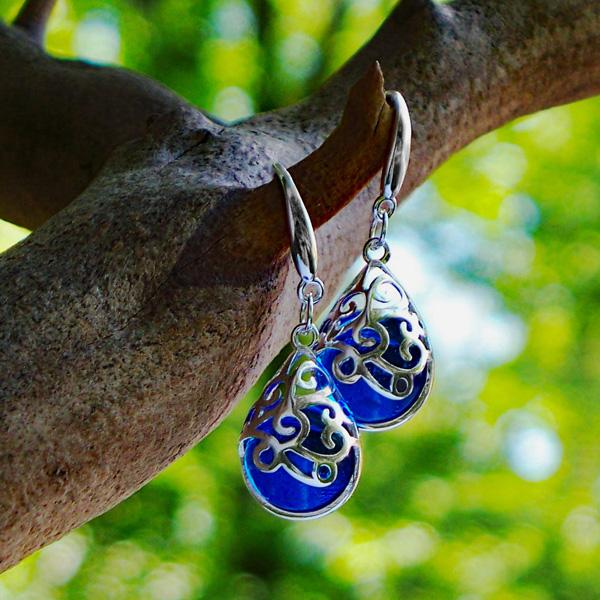
It’s important to have enough roost space for all of your birds. If one lower on the pecking order gets kicked off the roost, she could be very cold on the floor.
Roosts should be elevated at least two feet off the floor. Eight to ten inches of roost space is recommended for each bird. A 2×4 makes a good roost and allows the chickens to keep their feet covered by their feathers.
The Coop
Heaters Not Needed
Most people assume you need a heater or heat lamp in the chicken coop. For that, you need electricity in the coop. I decided against it because heaters and heat lamps pose a fire risk. It’s also not good for chickens to be too warm in the coop.
- If chickens go from a very warm coop to freezing temperatures outside, they will not be able to adapt as well.
- A toasty coop means the birds won’t continue to grow as many warm feathers.
- The warmer it is in the coop, the more likely there will be moisture in the air that can cause frostbite.
Preventing Drafts
Ventilation is critically important in the coop, even in frigid weather. Yet, you need to keep the coop draft-free. The key is to allow moist air to escape above the roosting hens, but close any holes that are near the hens or below the roost. If a coop doesn’t have enough ventilation, ammonia fumes can build up to toxic levels.

First you need to locate any draft sources by looking for points of light from within the coop. Then you need to plug them up. This can be accomplished with caulk, shims, rags, bedding, weather stripping, towels or any chicken safe material you can put in the gaps.
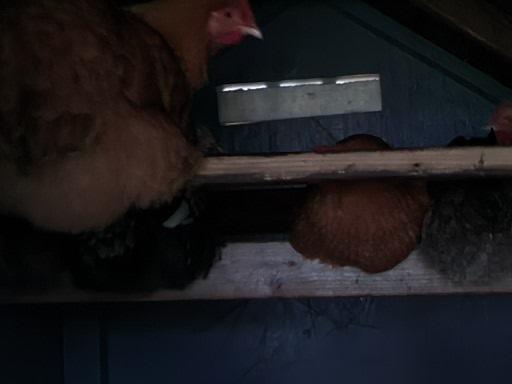
Ideally, you want to take care of this before winter weather sets in. We added weather stripping around the window covers and the edges where the nesting boxes open. I found an opening above the nesting box that I easily closed by hammering a shim in and breaking it off. But I kept finding more points of light when it was too cold for caulking. So I stuffed rags into those spots. Then as nighttime temperatures dipped into the teens, I decided to partially block the ventilation holes to make sure the opening was further above my girls’ heads.
Shrink the Coop
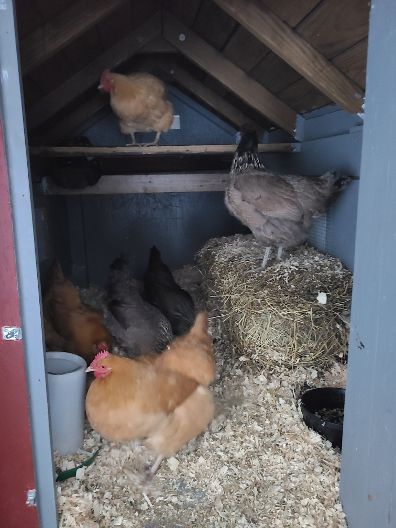
The more space chickens have, the more difficult it is to keep the space warm. Our coop design has a protruding section for the nesting boxes and for a feeding station on the other side. The feeding station is too short to work well and I rarely use it. So I filled that section with old sheets and blankets and egg cartons to minimize the air to be warmed.
I could have simply attached a board inside to block off the area! I plan to make that upgrade next fall. It should be a lot easier to put in place than all the filler I used.

I also put a bale of hay inside the coop, which cut down dramatically on the space to be warmed. As an added benefit, the girls use the hay bale as a step to get up on the roost.
With temperatures forecast for single digits in the next few days, I plan to add a second bale of hay to up the temperature a bit more.
Insulate
We didn’t insulate our coop when we built it. You don’t want insulation in the summer. However, insulation can be added in the fall if you have the right materials. Chickens will peck at anything so it’s important to cover up all insulation or use heavy blankets that pose no harm to your birds.
Some people insulate from the outside by covering the coop in blankets and tarps. There’s more than one way to help keep chickens warm in winter.

Playtime
Chickens are extremely curious creatures. If they get bored, you can end up with them pecking each other. So even when it’s extremely cold, we let them out to stretch and move around. Adding mirrors in the coop or hanging an apple or cabbage from a string provides for extra fun.
Since they don’t like the snow, we shovel inside the run and add extra litter or leaves to keep their feet warm. If the snow is deep, we shovel a path for them so they can still get some free range time.
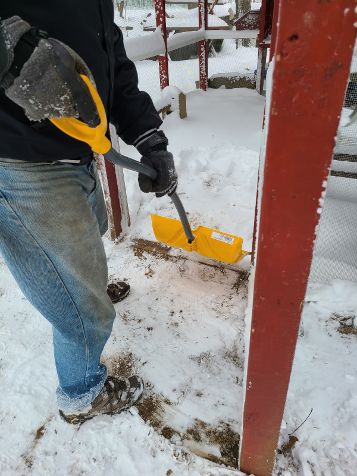
Shoveling the run 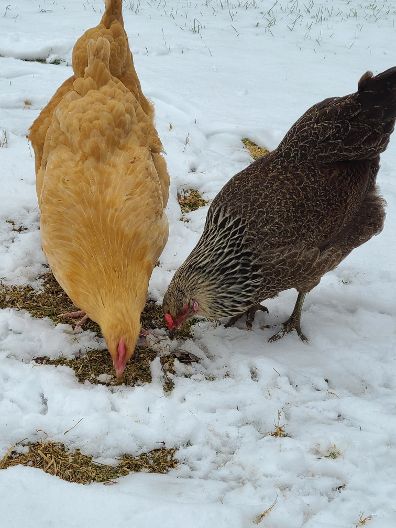
Looking for food under the snow 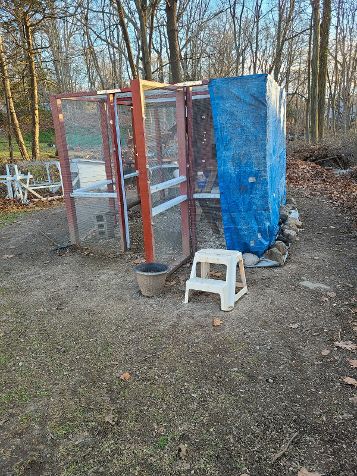
Tarp on run to cut cold winds 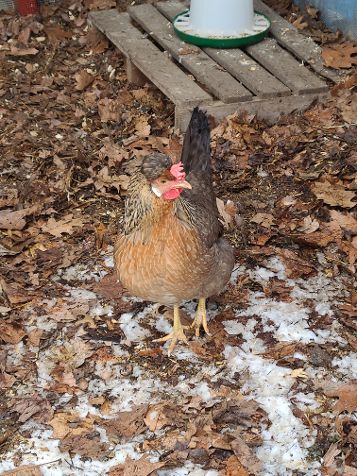
Melissa stayed inside the run
Feed & Water
What you feed your chickens and when affects their warmth too. Chickens need plenty of protein in the winter to keep up their general health in the cold and to grow more feathers, especially once they start molting. A quality feed can provide that. Added meal worms help too.

Scratch or treats that contain cracked corn keep chickens warm because it boosts their metabolism as it’s digested. My girls L O V E their treats! This bed time snack is important in winter.
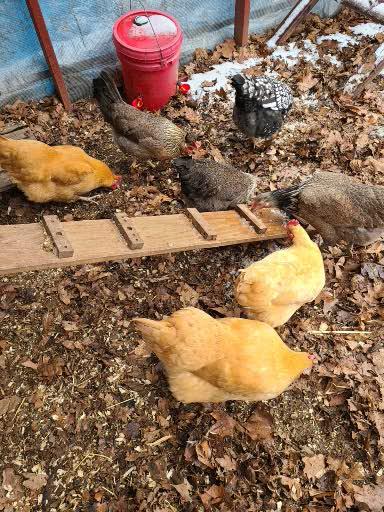
A water heater can be handy in winter. I don’t have one. That just means I have to take fresh water out more often. I don’t mind, because I like to check on the girls a few times every day.
When the temperature freezes at night but not during the day, we bring their big waterer into the house for the night and bring it back in the morning.
I leave a container of water inside the coop at night because I never want my girls to go thirsty. Even with temperatures in the teens, that water has never completely frozen. It’s reassuring to see that!

Deep Litter Method
I am a huge fan of the deep litter method. Instead of cleaning every bit of litter and poop out of the coop, you simply mix it around and add another layer of fresh litter on top. The chicken poop begins to compost and break down while still in the coop, creating heat. It takes time to build up but is a key to how we keep our chickens warm in winter
The most important caveat with this method is to look for wet spots and remove any wet litter immediately. Wet areas can create an increase in ammonia vapors which are hazardous to your chickens. Water vapor can also increase the risk of frostbite.
One other amazing advantage to using the deep litter method is, it will save you a significant amount of work and time! I use a rake and move and mix the litter every day. I’ve learned where I’m most likely to have wet spots and make sure to check them daily.
If I put scratch treats inside the coop, the girls will even mix it up for me! Though they’ll also fill their feeder and waterer with the litter if I forget to take them out!

Making Adjustments
The best part of how I manage the temperature for my pretty pullets is I can add and subtract as the weather and their needs change.
If we have even colder temperatures, I can add a few hot water bottles to the coop.

In the spring, I’ll be removing the vent closures, the hay bale(s) and the stuffing I put in the coop. Then come next fall and winter, I’ll add back in the board to shrink the coop, the vent blocks and new hay bales.
It’s a fine balance between keeping it dry and warm and well ventilated but not drafty!
A final note: Many people use supplemental lighting in the winter so their hens will continute to lay eggs. I prefer to let my girls follow the natural rhythm of the seasons. They only have so many eggs they’ll lay over the course of their lifetime. Since I’m committed to letting them live long lives, I’d prefer to continue to get occasional eggs later rather than more now.
I’d love to hear your questions and comments about how we keep our chickens warm in winter!


